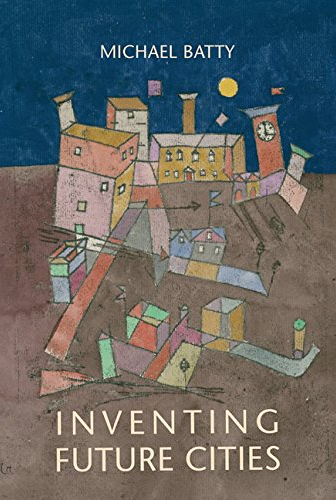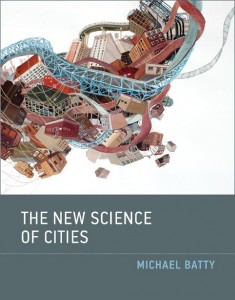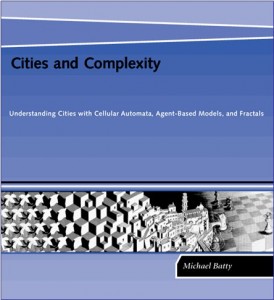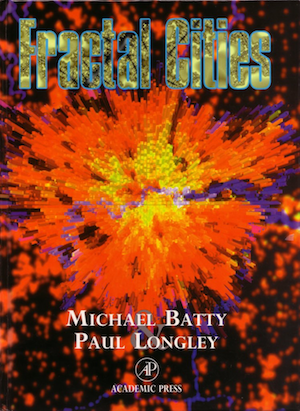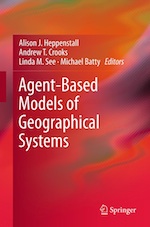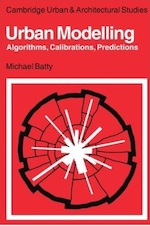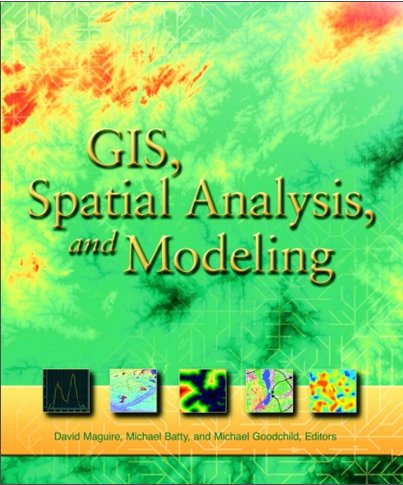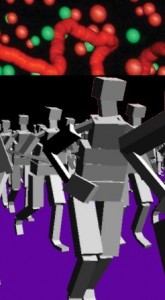 Agent-Based Models or Modelling, abbreviated ABM , involves developing simulations of urban structure and dynamics at the level of how individual objects which comprise such systems behave. The best example and the one that is developed in my lecture today is models of how pedestrians move in space and time, in crowded situations. In fact we can define agents in cities as any irreducible set of objects – they need not be human and very often they can be aggregate populations in groups, buildings, streets and so on. As long as they have a dynamic and interact with each other and with other objects they are candidates for this ABM. An introduction is contained in my book Cities and Complexity: Understanding Cities with Cellular Automata, Agent-Based Models, and Fractals hanging around the office.
Agent-Based Models or Modelling, abbreviated ABM , involves developing simulations of urban structure and dynamics at the level of how individual objects which comprise such systems behave. The best example and the one that is developed in my lecture today is models of how pedestrians move in space and time, in crowded situations. In fact we can define agents in cities as any irreducible set of objects – they need not be human and very often they can be aggregate populations in groups, buildings, streets and so on. As long as they have a dynamic and interact with each other and with other objects they are candidates for this ABM. An introduction is contained in my book Cities and Complexity: Understanding Cities with Cellular Automata, Agent-Based Models, and Fractals hanging around the office.
Agent-Based Models
On to 21st Century Urban Simulation
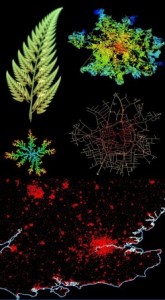 Gone are the land use transportation models of the last three weeks and now come cellular automata models (lecture 7), fractal models and morphologies (lecture 8) and next week we will broach agent-based models. Click to get these two lectures. But look at the Heppenstall et al. book on our site on agent-based models for next week too – there is a copy floating around CASA which you can peruse and pass on. Software too on our CASA web site which has been ported across from the old site. Don’t forget there is tons to read on these lectures and Alan Wilson will be coming on stage in two weeks or so to put flesh on the skeleton I have erected to show you how we really build these models. Enjoy.
Gone are the land use transportation models of the last three weeks and now come cellular automata models (lecture 7), fractal models and morphologies (lecture 8) and next week we will broach agent-based models. Click to get these two lectures. But look at the Heppenstall et al. book on our site on agent-based models for next week too – there is a copy floating around CASA which you can peruse and pass on. Software too on our CASA web site which has been ported across from the old site. Don’t forget there is tons to read on these lectures and Alan Wilson will be coming on stage in two weeks or so to put flesh on the skeleton I have erected to show you how we really build these models. Enjoy.
Integrated Urban Models Today
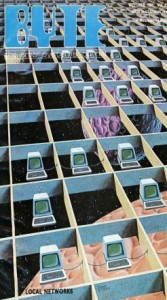 Today is the third session in our five session introduction to urban modelling and simulation. This will be about land use models and how we construct them from elements of spatial interaction submodels. And I will illustrate a worked example. But please read last weeks lectures Lecture 3 and Lecture 4 because we didn’t finish them and they are key to today – Skim them before the lecture if you can – Lectures 5 and 6 are posted on the relevant pages. The image on the left is from an old cover of Byte magazine – which was ‘the’ computer magazine in the 1980s. It had countless images comparing computers to cities and city blocks, a fact that resonates strongly now with the idea of smart cities, another theme on this blog that is yet to be developed as a course of lectures.
Today is the third session in our five session introduction to urban modelling and simulation. This will be about land use models and how we construct them from elements of spatial interaction submodels. And I will illustrate a worked example. But please read last weeks lectures Lecture 3 and Lecture 4 because we didn’t finish them and they are key to today – Skim them before the lecture if you can – Lectures 5 and 6 are posted on the relevant pages. The image on the left is from an old cover of Byte magazine – which was ‘the’ computer magazine in the 1980s. It had countless images comparing computers to cities and city blocks, a fact that resonates strongly now with the idea of smart cities, another theme on this blog that is yet to be developed as a course of lectures.


